A small, authentic, undiscovered island, located in the northern Dodecanese; Leros boasts charming harbors, coves and inlets protected from the winds.
There are also shipwrecks, a war tunnel museum, a natural port (one of the largest in the Mediterranean) that transports you to Italy, four marinas, pristine nature, different types of architecture, and very rich history. Are you ready to explore it?
What you need to know before you arrive
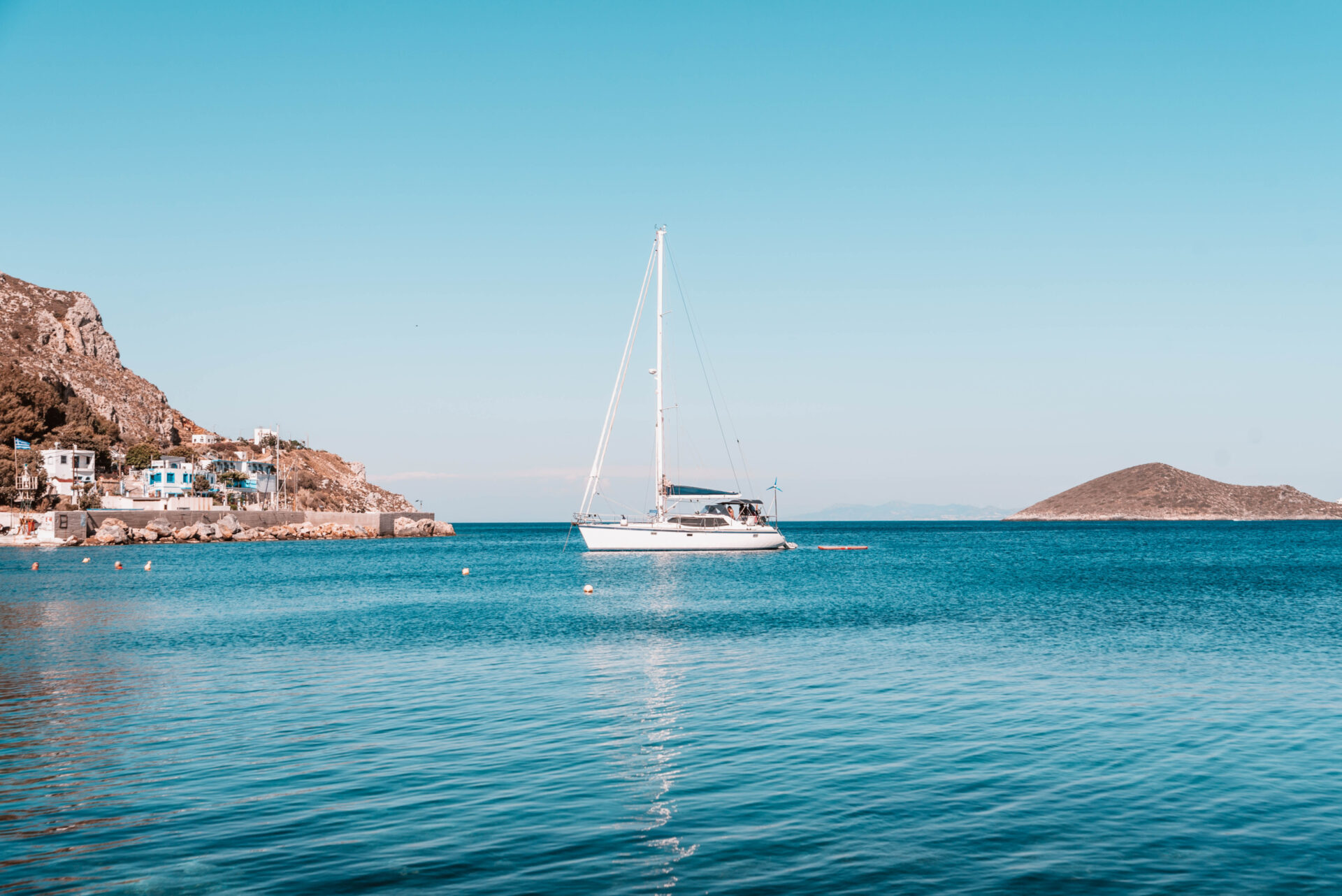
-Leros is a little island in the Dodecanese, located between Patmos and Kalymnos. Thanks to its location, Leros is perfect for island hopping to Patmos, Kalymnos, and Lipsi.
-Leros has a population of about 8500 inhabitants, which makes the island very distinct.
-From 1958 to 1995, Leros was home to one of the largest psychiatric hospitals in Europe. The island was economically dependent on the mental hospital since entire families worked there as guardians, but the hospital’s terrible living conditions affected the locals working there.
-During the junta of the Colonels, the island was used as a place of internal exile for political protestors.
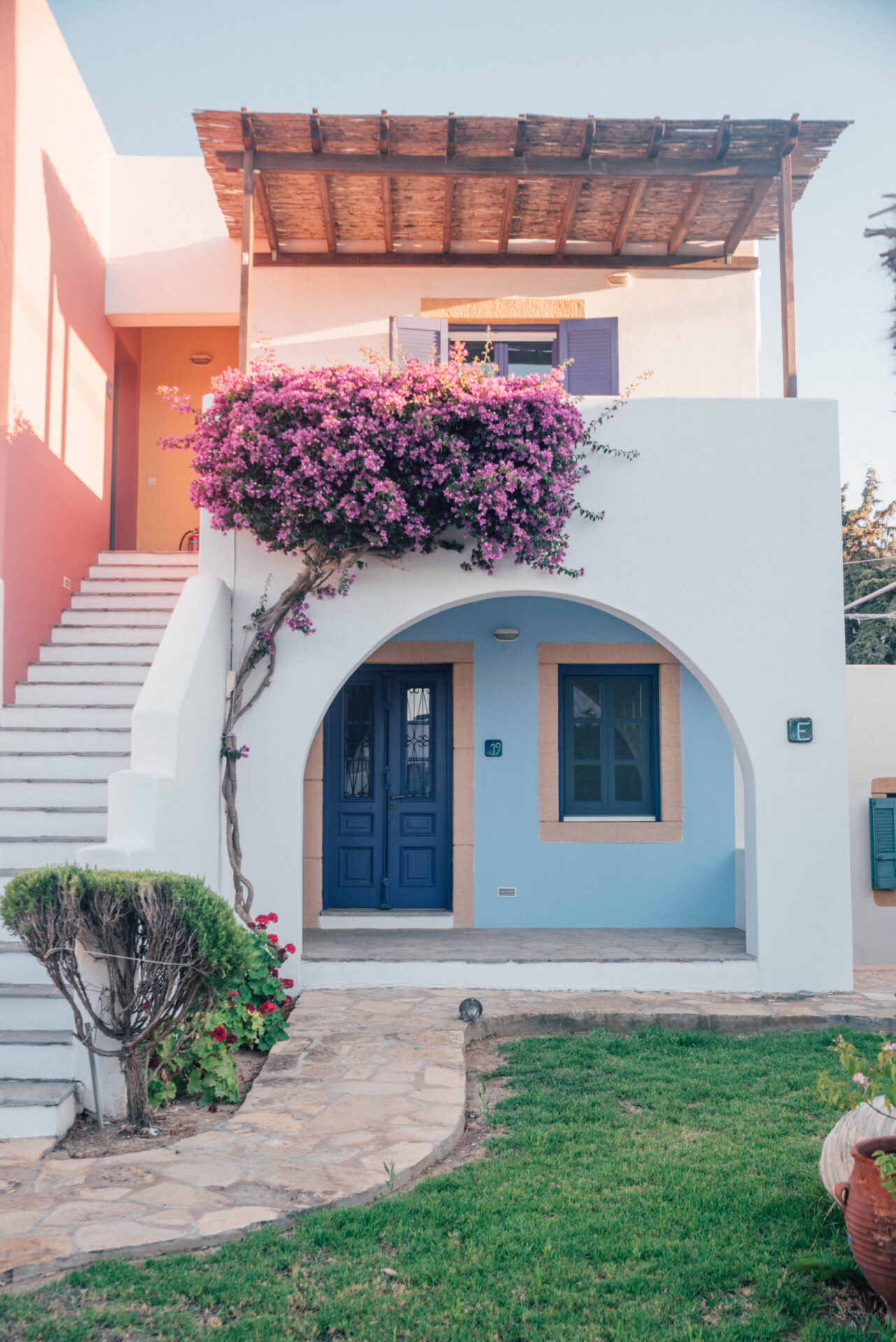
Getting there
You can reach Leros island by sea or air. Ferries from Athens to Leros depart from Pireaus about four times a week. The trip lasts approximately 8 hours. Leros is also connected by ferry with Rhodes, Patmos, Kos, Kalymnos and Lipsi. During summer, ferries run between the islands of the Dodecanese almost every day. Leros Municipal Airport receives only domestic flights from Athens International Airport “Eleftherios Venizelos”. The flight from Athens to Leros lasts 50 minutes.
Where to stay- An ideal area to stay is in Alinda or Panteli.
Tips for getting around
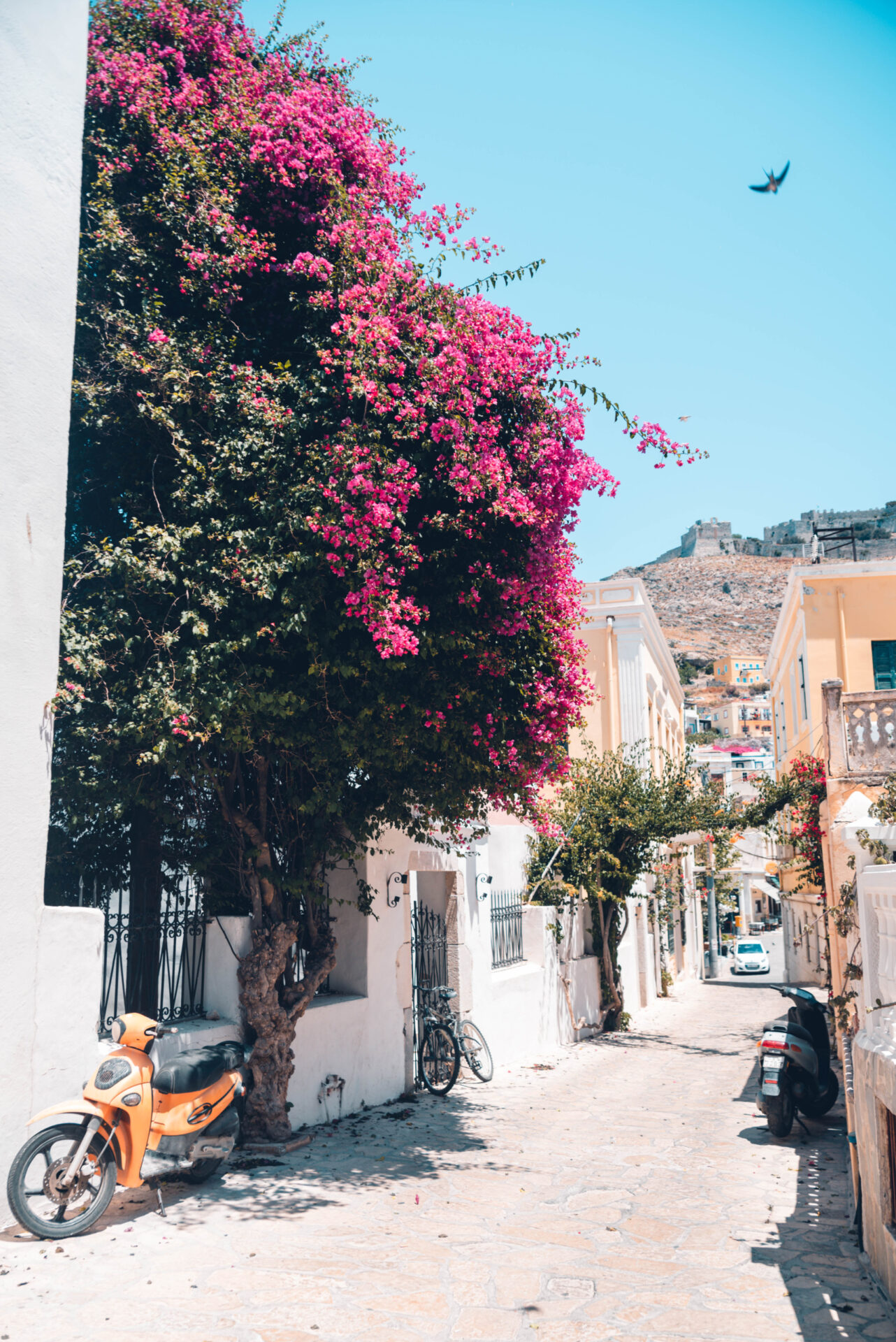
Leros has a bus network that connects you with the busiest places. Yet we recommend renting a car or motorbike in order to explore the island at your own pace and visit places you can’t reach by public transport. We rented our car from MOTOLAND in Panteli, founded in 1996 by Mr. Ilias who has been involved in the car and moto market of Leros for the last 15 years (Tel. +30 22470 26400).
Bear in mind that there are a lot of Vespas on the island. Plus, the employees of the municipality move around on a Vespa, a culture left by the Italians. There is even a motorcycle club, under the name of MOL.
Best time to visit- July and August are the two months in Leros when most travelers arrive on the island. Also, the weather temperature peaks during this period. On the other hand, June and September are not so busy and still quite warm, so they are the ideal months to enjoy the island.
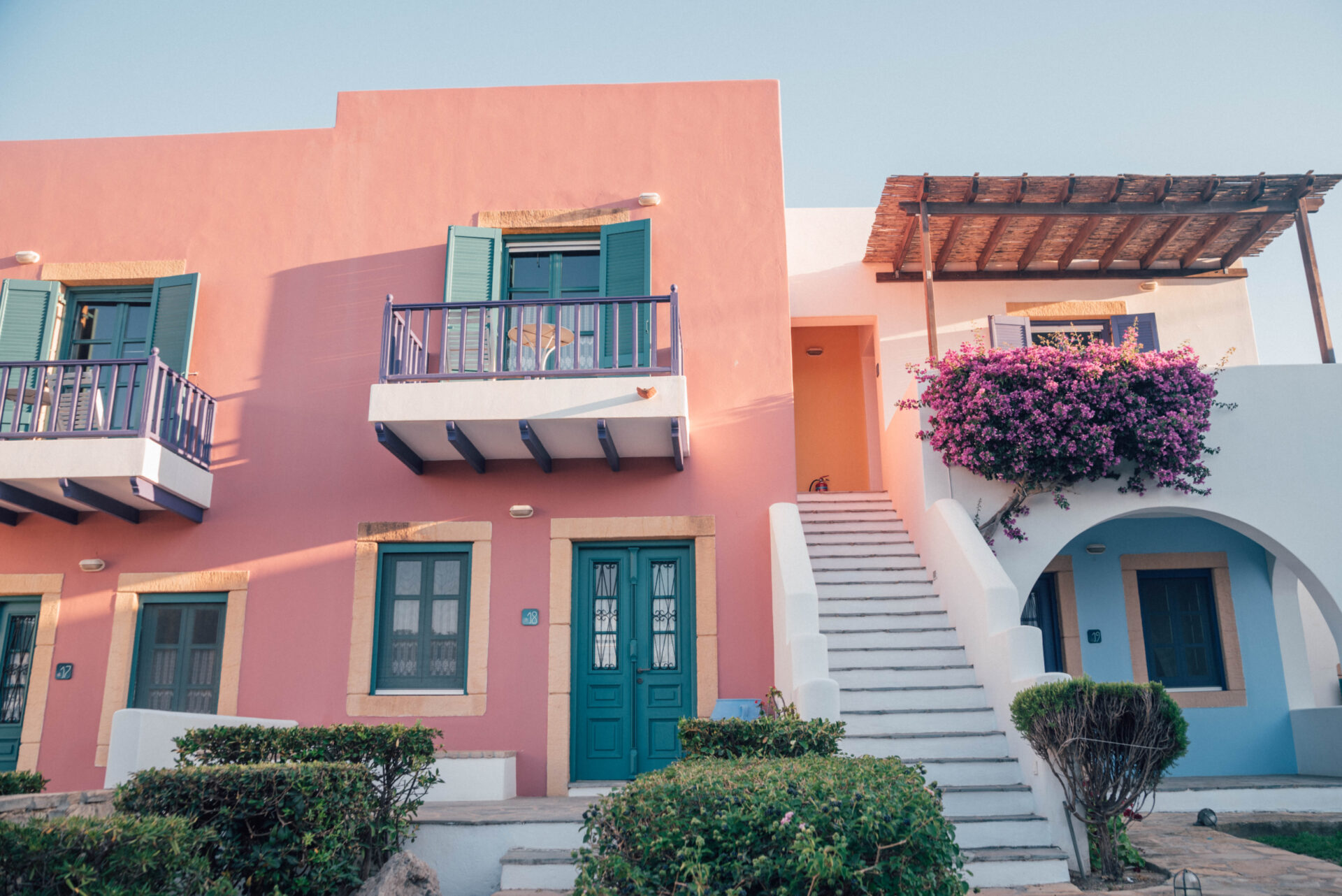
Where to sleep
Nefeli Hotel: It is located in a peaceful spot next to Agia Marina town, very close to the beach of Kritoni in Leros.
Alea Mare: This renovated hotel right by the sea is set in the beautiful village of Alinda.
Irene Hotel: Just 70metres from the beach of Alinda, this hotel is ideal for families.
Panteli Beach Studios: Located at the feet of the picturesque Platanos village, just a few meters from a sandy beach.
Where to eat
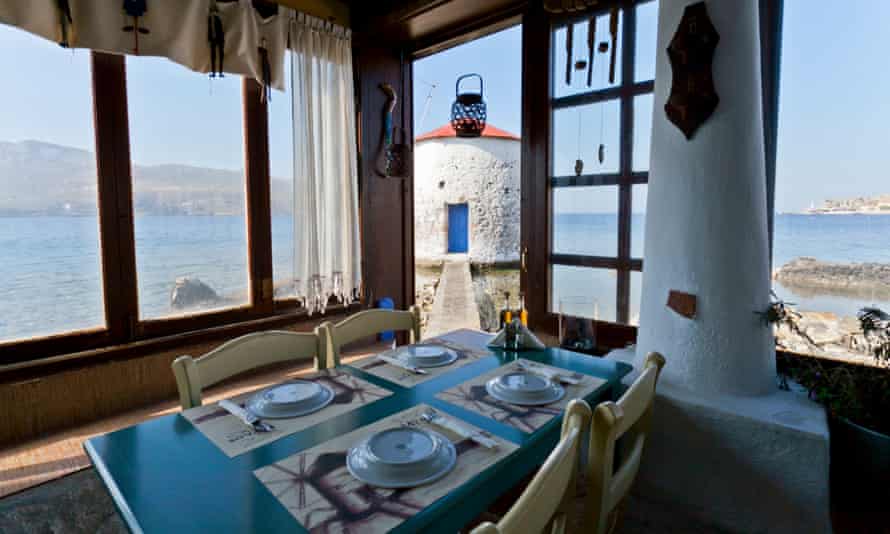
Milos restaurant: Located in front of a traditional windmill, with the breathtaking view of Agia Marina, this restaurant specializes in seafood and pasta recipes cooked with modern culinary techniques. It’s one of the best seafood restaurants on Leros if not the Dodecanese.
Psaropoula: A family-owned and run seafood taverna since 1962, set right by the water, on the beach of Panteli.
El Greco: A traditional taverna in Panteli, right on the sea; serving traditional recipes from Leros combined with modern Greek bistro cuisine.
Dimitris o Karaflas: Set in Spilia, which lies between Panteli and Vromolithos; they serve tasty food and offer a nice view.
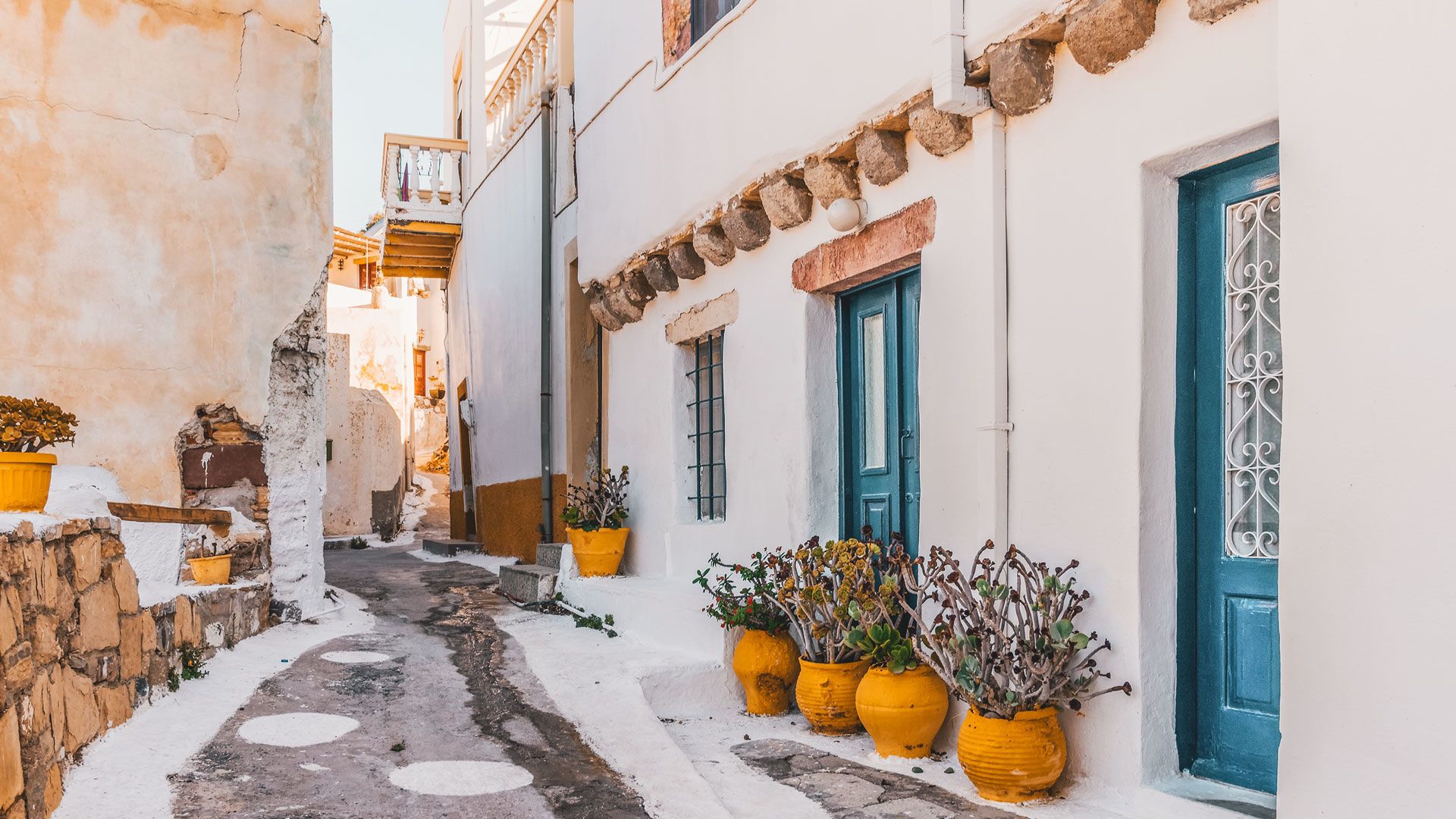
Sotos: Located in Drymonas, come here for delicious fish appetizers.
Petrino: Perfect for grilled meat in Lakki.
To Paradosiakon: Housed in a historic Italianate mansion on the waterfront of Agia Marina, this is perfect for anyone with a sweet tooth.
What to eat
Gavafes, a tropical fruit (citrus-flavored type of guava grown only on Leros), was brought over by Greek-Egyptians; and has a very intense aroma.
Patsavouropita (yogurt syrup cake)
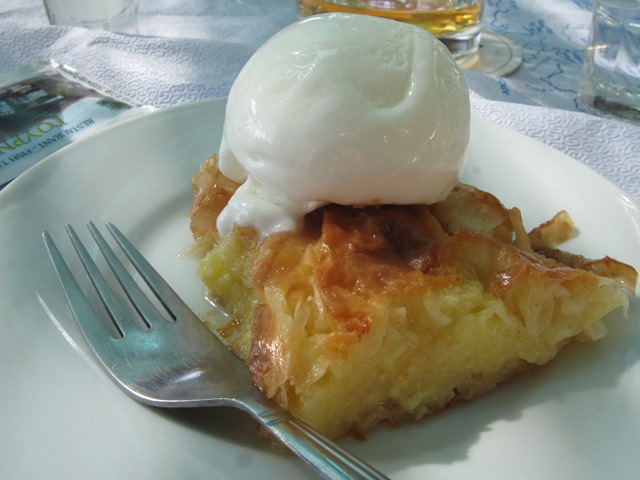
Pougkakia (almond and mandarin pastries)
Ladotyri, a local cheese
Salted kolios (fish)
Soumada. Don’t pass up the opportunity to quench your thirst with this locally produced drink!
Where to drink
Calvo Café-Pub in Agia Marina, set in a beautiful old red building right by the sea.
Meltemi, right on the sea in Agia Marina.
View cafe-bar-restaurant, located at the castle, overlooking Agia Marina.
Apothiki Night-Club for Greek music.
Where to swim
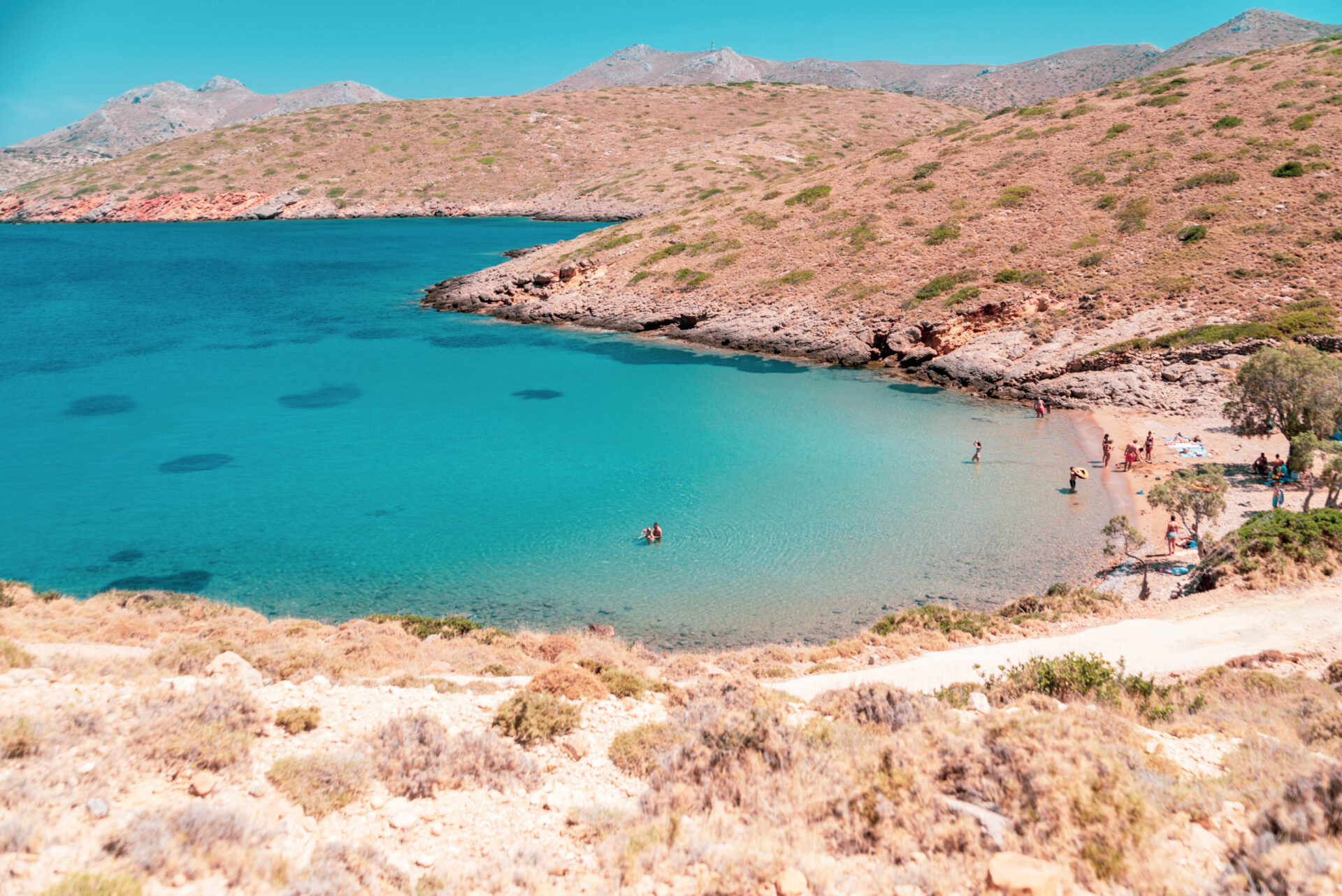
Dyo Liskaria: Charming windless cove with deep blue waters. An organized beach with shops nearby. Chill at Zephyros Beach bar.
Alinda: One of the largest beaches of Leros. Organized beach with blue waters, shops and tavernas nearby.
Panteli: Famous beach of Leros. Here you will find one of the largest beach bars on the island, while nearby there are other shops and mini markets.
Agia Kioura: An isolated sandy beach with blue waters surrounded by nature. Take with you water, food and an umbrella. Don’t forget to visit the church Agia Kioura.
Vromolithos: A popular sandy beach with facilities next to the local settlement.
Agia Marina: One of the most famous beaches of the island with shallow, clear waters.
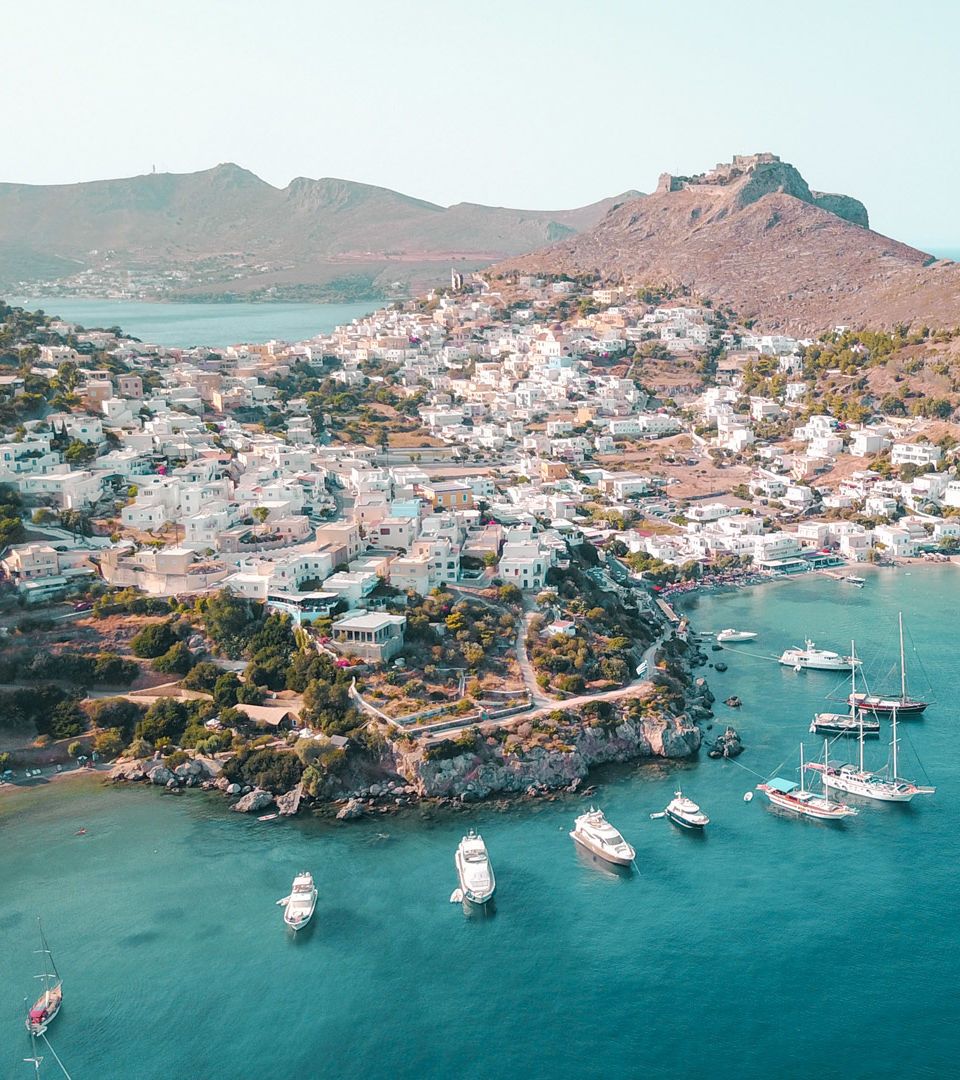
Xirokampos: Quite a large, sandy beach with deep waters that are suitable for diving. Near Xirokampos there is a small rocky beach, Panagia Kavouradena, for those seeking privacy and tranquility.
Agios Spyridonas: A small beach with sand and pebbles, that stands out for its clear blue waters and the shipwrecked boat on the shore.
Krithoni: Well-known organized beach with clear waters, fine pebbles and umbrellas. There are also tall trees around.
Koulouki: These are three consecutive coves, with fine, light sand, cool waters, surrounded by imposing pines and lush vegetation. At the middle beach, there is a snack bar with snacks and drinks.
Merikia: Beautiful, quiet beach near Koulouki, with crystal clear waters and large tamarisk trees that protect from the sun.
Discover history
-According to myth, Leros island was where the ancient Greek goddess of hunting, Artemis, used to go hunting, thanks to the island’s large deer population.
-During the Byzantine period, Constantine the Great, incorporated Leros into the theme of Samos, and many magnificent Christian churches were built as well as the castle and the Panagia (Blessed Virgin) church on the hills.
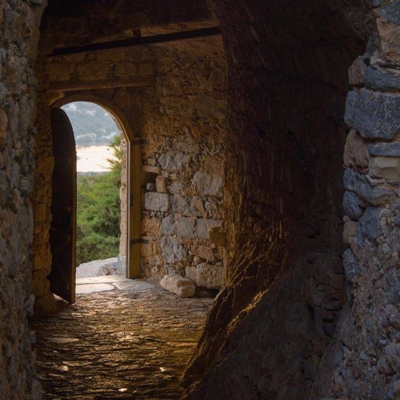
-In 1314, Leros was occupied by the tyrannical Knights of St. John of Rhodes who governed it until the Turks invaded and took command of the entire Aegean archipelago.
-After the independence of Greece in 1829, all the Dodecanese islands were ceded to Turkey by the London Protocol in exchange for Euboea. From 1912 to 1943, the island was occupied by the Italians and during this time, the intention was to develop Leros into an Italian naval base. Over several decades important defense work was carried out and military installations were built with a new deep-sea port created at Laki. Many buildings were demolished and, in their place, grand buildings were erected in the new, modern style that is now associated with the Fascist architecture of the 1930s.
-During World War II, the Greek Sacred Battalion, together with the British alliance liberated the island from Italian occupancy. However, after almost 50 days of bombardment from German air raids, the Germans went on to occupy the island until the end of the war in 1945. This was further followed by a two-year occupation by English armed forces, which culminated in March 1948, with Leros and the whole of the Dodecanese finally being united with Greece.
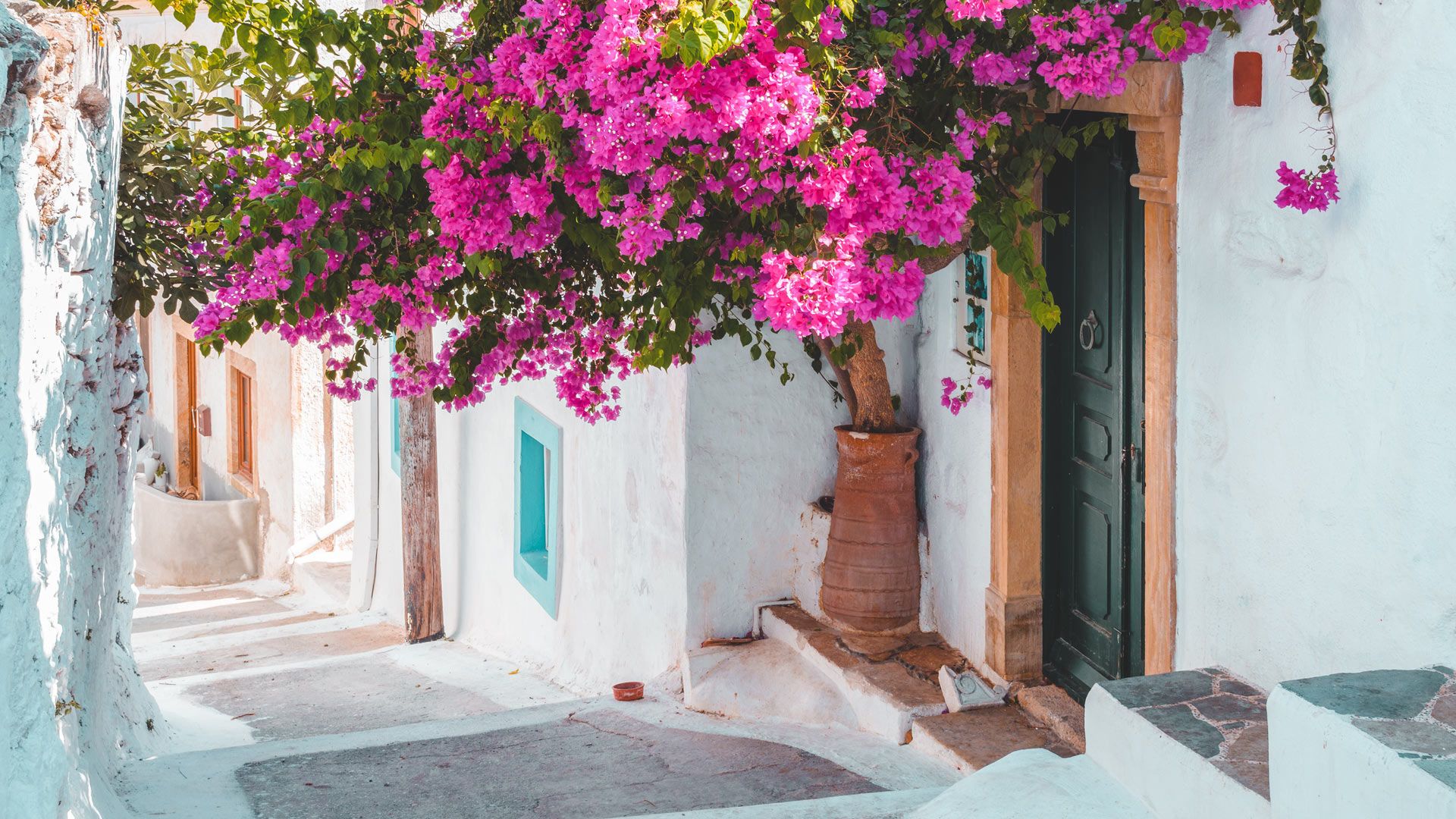
Must visit villages – Leros is dotted with picturesque villages. The most popular of them are Alinda, Panteli and Agia Marina.
Culture/traditions of the island
-During the first two weeks of August, the wine festival of Leros is held in Xirokambos, where you can taste some –Lerian wine and enjoy traditional dances and local musicians of Leros.
-Every August, the Municipality of Leros organizes the Alindia festival, featuring athletic and other cultural events.
-The three Moon Festival is held in June, July and August (one for each full moon) with artists from all over Greece displaying their work in charming buildings of Leros.
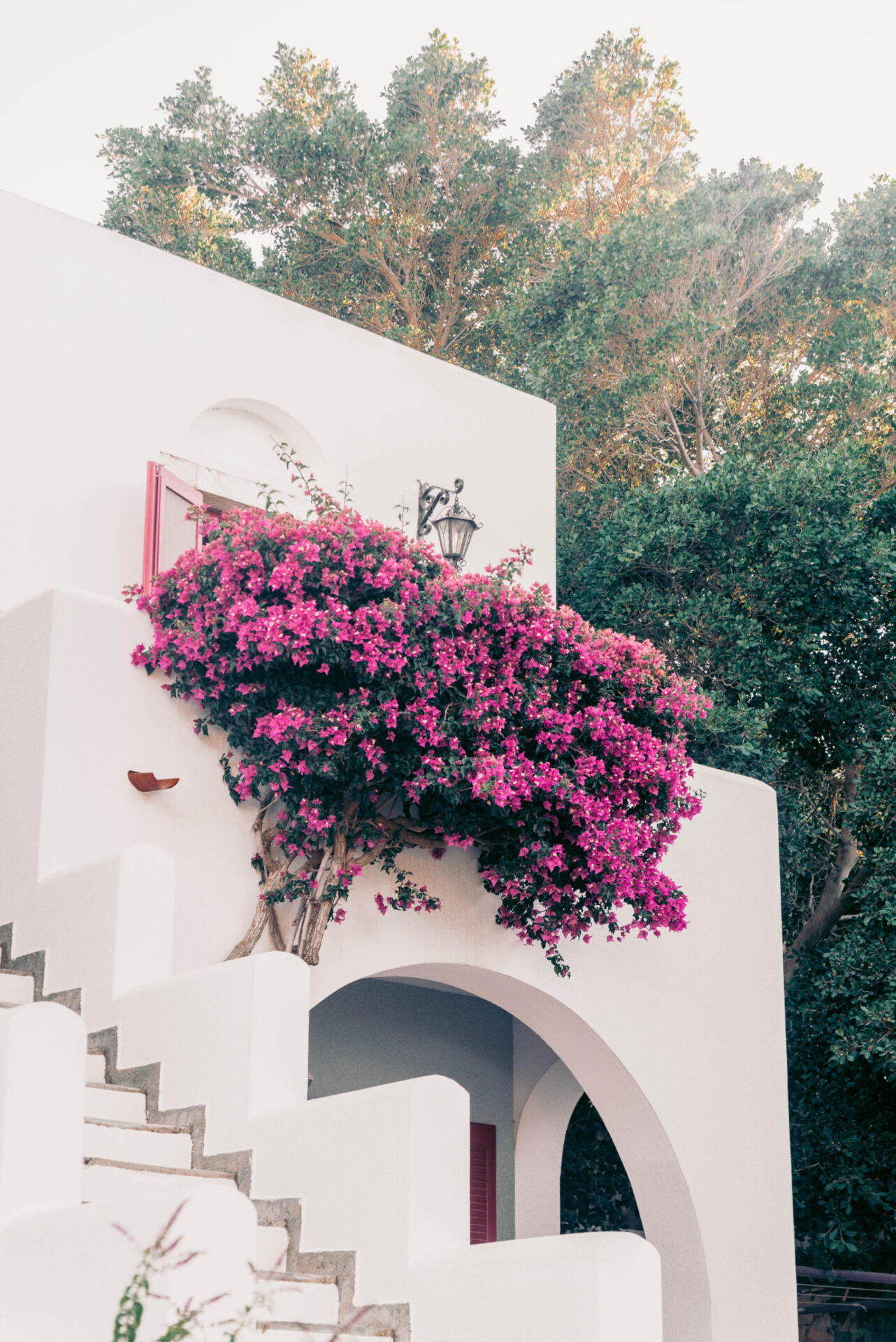
-The Feast of Trata is held every year in September in Panteli, where the fishermen cook their fish and offer them to guests.
-In August, the celebration of Drymonas takes place on the local beach, where a Lerian cuisine festival is held with plenty of wine, food and dance, to the sounds of traditional and folk music.
-Gourna is the representation of the traditional threshing that takes place, free traditional appetizers and wine are offered with the sounds of a lyrical feast.
-One of the major events in Leros is the feast of Agia Marina on July 17th, which lasts two days and also the glorious celebrations of the 15th of August, when thousands of pilgrims arrive in Leros that day, at the church of Panagia of Kastro, the patron saint of the island, in Platanos village.
Do as locals do…
Dance at Disco Diana. Open from 1978 until the beginning of 2000. In 2019 it reopened with a disco ball and music from the ’90s. Its name (Diana) means Artemis, the Goddess of hunting, who is connected with Leros.
Insider tips- If you are departing by ship at 10:30 pm for Piraeus, before leaving head to “Leon” at the port for the tastiest souvlaki.
Ideal time to spend here? Leros is a small island and you won’t need too long. Three days should be enough to see everything, except if you want more time just to really relax.
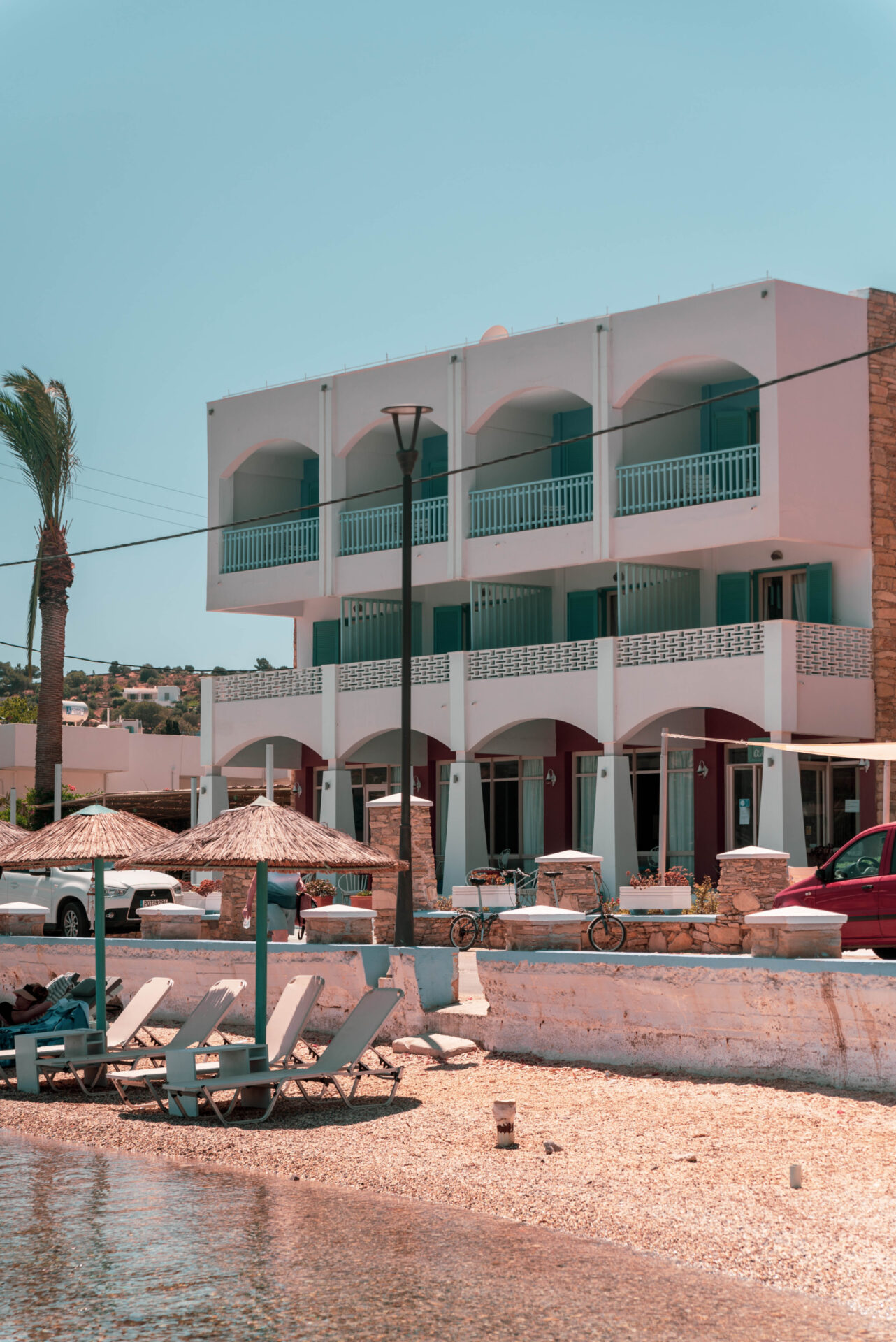
Favorite part? The most picturesque site on Leros is the windmills in Pandeli, on the way to the castle.
What to avoid?
Don’t try to find nightlife in Lakki, there is not much happening. The nightlife of the island beats in the heart of Agia Marina.
Sometimes buses do not stick to the timetable. Avoid waiting at the bus stop if you have another option.
Top activities
Scuba diving and snorkeling. Leros is gradually developing into a popular scuba diving destination in the Aegean Sea, due to the rocky coasts, the emerald water, and the old shipwrecks in the surrounding sea bottom. Popular Leros diving sites are the large Queen Olga Destroyer at the port of Lakki, the Anti-Submarine ship in the bay of Partheni and the wreck of German bomber Henkel-111 in the bay of Blefouti.
Here are some diving centers in Leros: Hydrovius Diving Center is a PADI resort on Leros island.
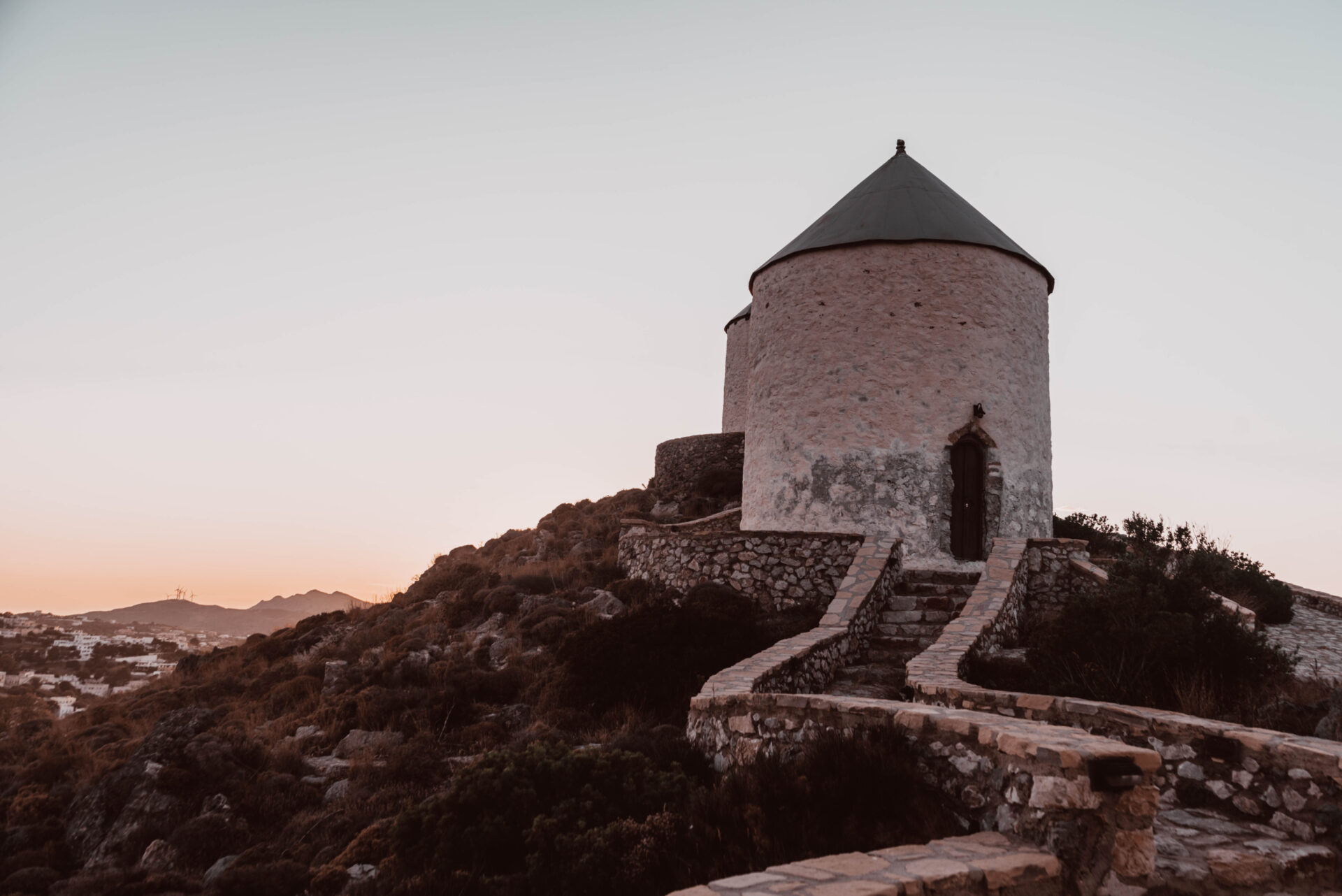
Camping and Diving Leros club is situated in the southern part of the island, really close to a quiet, small beach, ideal for diving or snorkeling.
Hiking. There are trails all across Leros. One of the most charming routes is from the village of Xirokambos, in the south, to the Cape of Diaporo. It takes between an hour and an hour and a half. Along the way, you’ll spot an old Italian military building with wall paintings created by soldiers during World War II.
Where to shop
Aspronisi boutique is a chic concept store with Greek designers’ creations and a range of accessories.
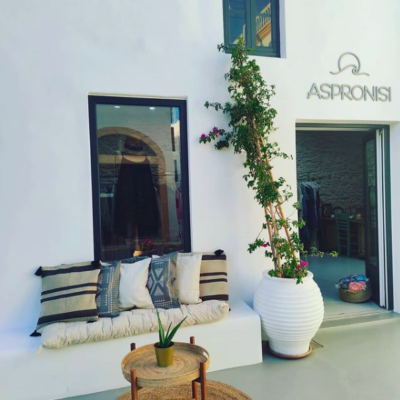
Ageri island boutique has exclusive Greek fashion brands, handmade accessories, unique art and home decor items.
Fegaropetra stocks handmade jewellery and accessories.
Keramika Lerou (Artemisio-Sifounios Pottery) has amazing pottery that are made in the shop by Mr Sifounios Makis.
To Leriko stocks gifts, handmade jewellery and clothing.
What to see
-The Medieval Castle, originally built by the Byzantines on the site of an ancient temple and then restored by the Venetians.
-The flour mill at the port of Agia Marina, an architectural model of a 20th-century windmill.
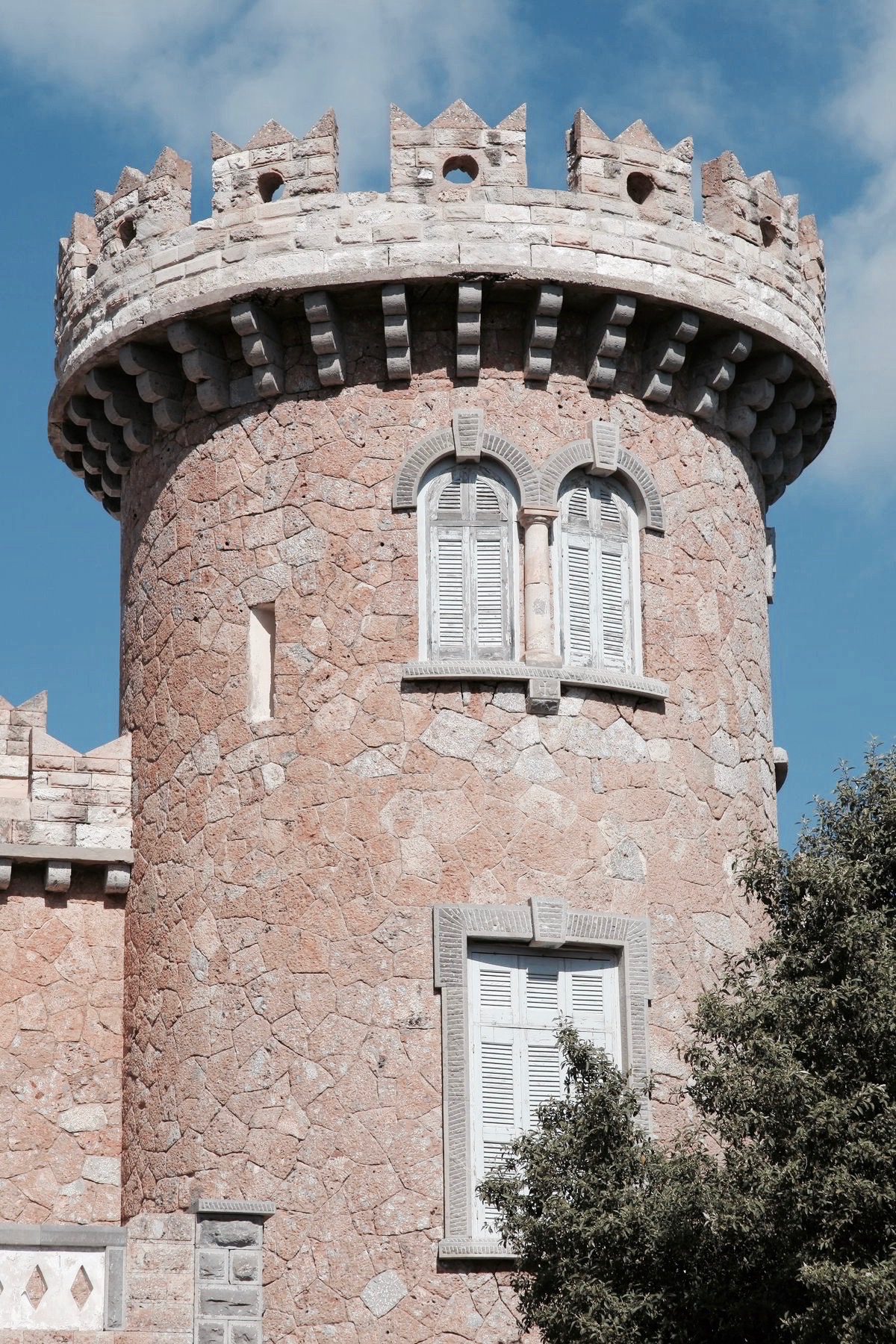
-The Historical and Folklore Museum, housed in Bellenis Tower, on the way to Alinda. It includes photos from the Second World War, traditional instruments, old maps, and manuscripts, among other artifacts.
-The lovely chapel of Agios Isidoros, on the islet of Alinda that is connected to the land by a narrow passage. Built on the site of an ancient temple, it offers nice views, especially in the sunset.
-The church of Prophet Ilias by the sea, beneath the Castle of Panteli.
-The church of Agia Marina, made of stone with two bell towers. Tradition says that fishermen found an icon of the Virgin Mary here while they were looking for crabs.
-The Castle of Xirokambos, built in Medieval times on the site of an ancient acropolis.
-The Archaeological Museum, housed in a Neoclassical building in Agia Marina that dates from 1882. It houses collections of prehistoric findings, small statues and ceramics from the Geometrical era.
-The War Museum, which opened in 2005 and housed in a tunnel built by the Italians during the Second World War.
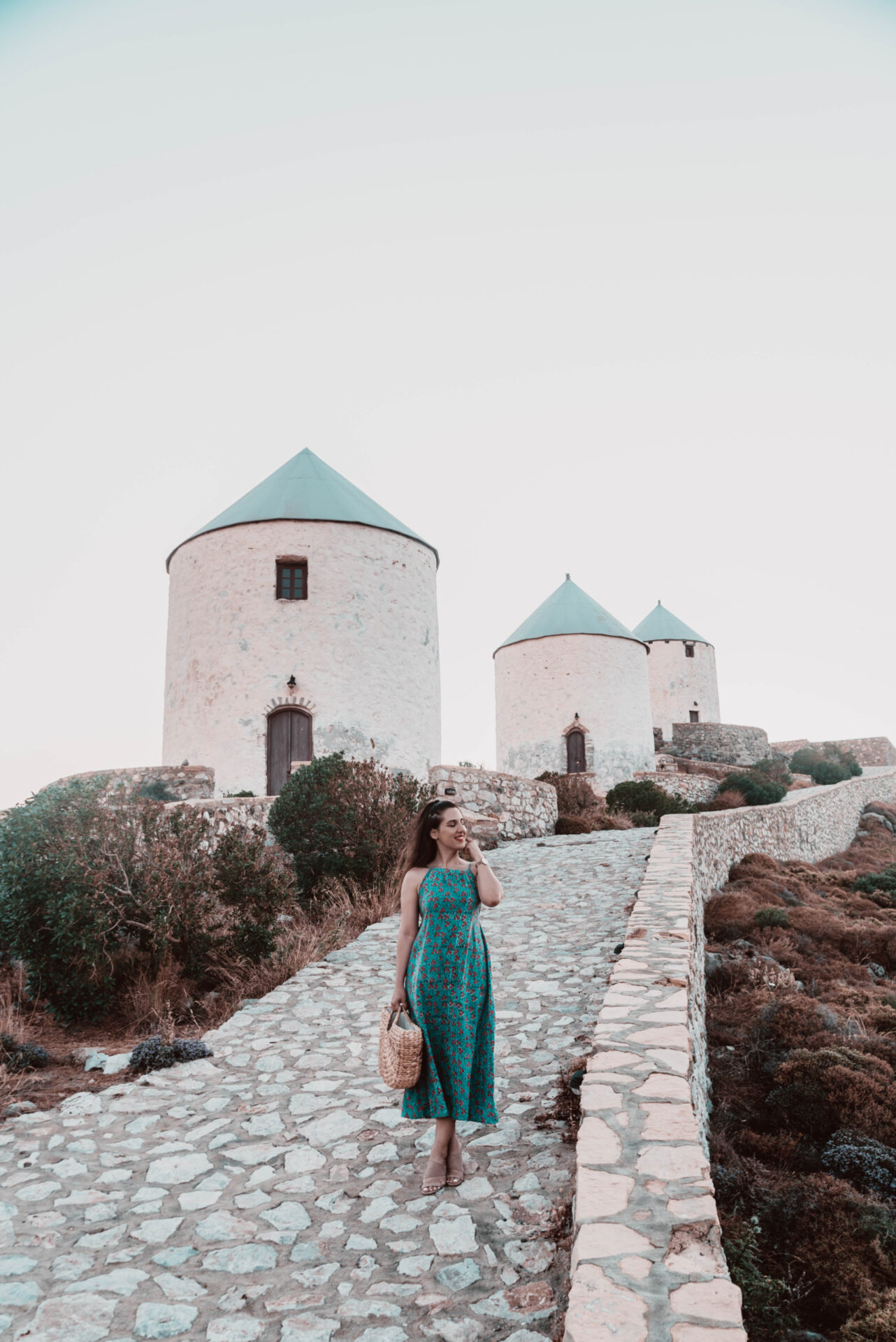
-The War Memorial in Lakki, the port of Leros, commemorates the attack of German bombers on the Greek destroyer Vasilissa Olga, during the Second World War.
-The Ecclesiastical Museum, housed in the Castle of Panteli. It hosts an ecclesiastical collection with Byzantine icons, gospels, candlesticks, and holy items as well as an archaeological collection with statues and vases.
-The Aerofono is an acoustic wall. The military employed blind people, who were thought to have better hearing capabilities, in order to listen to military movements in the area.
-The church of Agia Kioura. Political prisoners, including Manolis Glezos and the visual artists’ Kir. Tsakiris, Ant. Karagiannis and T. Tzaneteas that were imprisoned in a large military facility near the church painted icons on the walls of the church in 1968. The paintings are protected by the Ministry of Civilization as a work of art.
Take a day trip to…
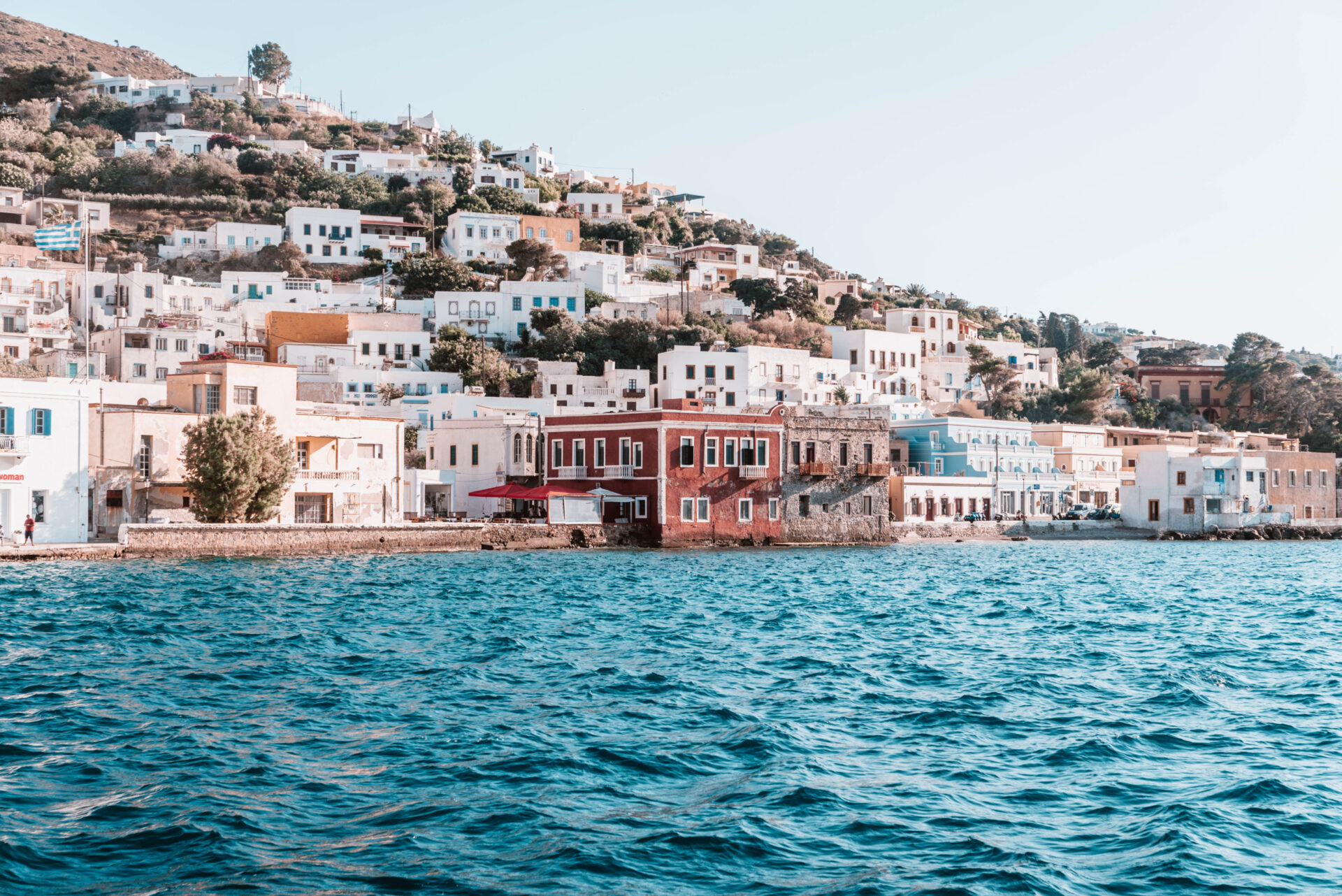
Discover islands with turquoise waters like other Robinsons with the traditional boats “Barbarossa” and “Agios Georgios” that leave daily from the island’s capital, Agia Marina. You will enjoy ouzo and local handmade delicacies on the boat – as if you have escaped with friends until you find yourself on the soil of Aspronissia, Makronisi and Tiganakia. The few residents of Arki, Lipsi and Marathi will welcome you like family. Sometimes on your return, if you are lucky enough, you may enjoy the company of dolphins.
What to do
-Enjoy a wine tasting experience at Hatzidakis Winery, where you can discover the whole process of winemaking from the grape to the barrel. Mr Giorgios Hatzidakis himself will explain everything to you. himself. Certainly, you will taste different kinds of wine served with local mezedes.
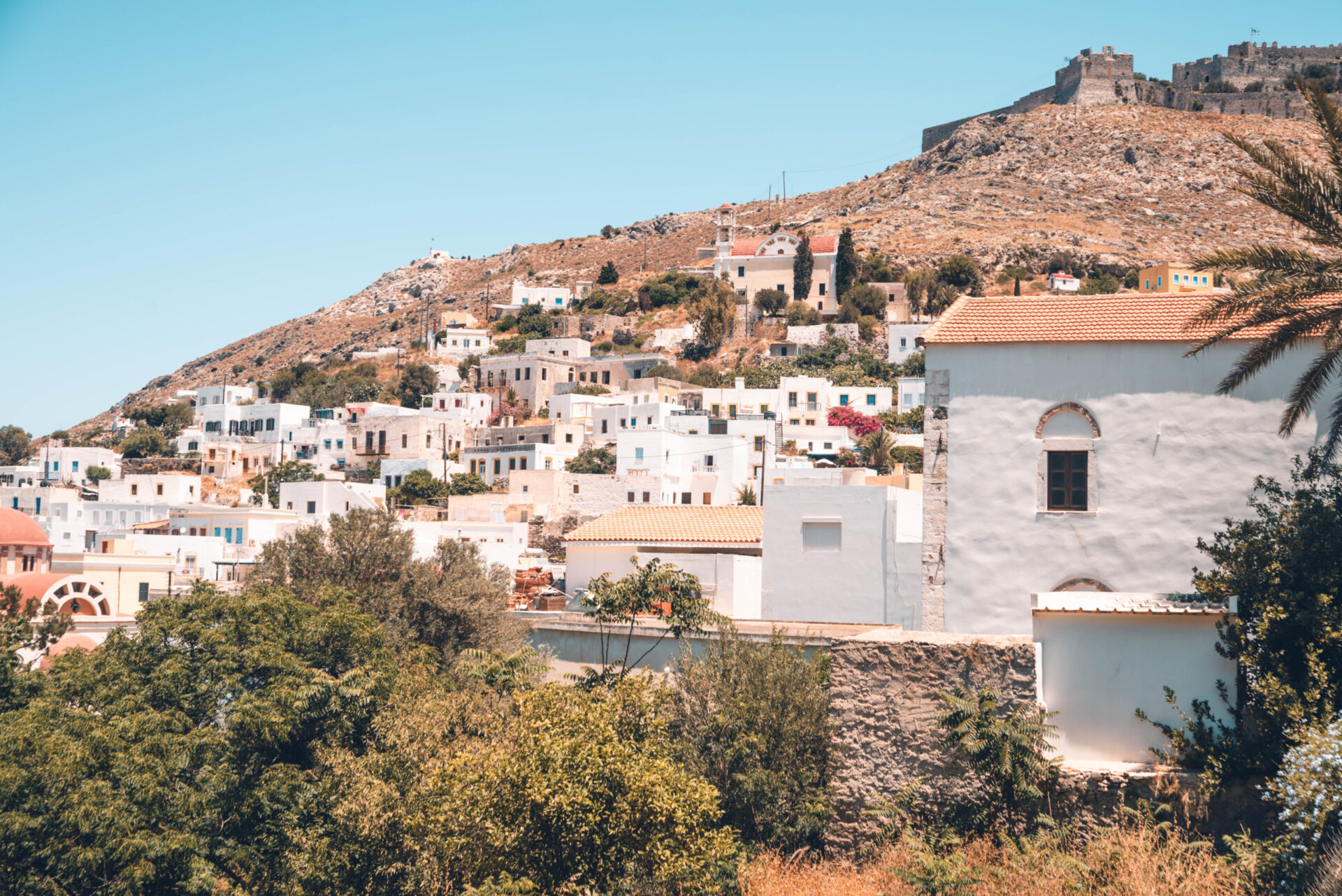
-Admire the special architecture that has been influenced by the Cycladic islands but also by Italians and Alexandrians. Lakki, the capital of the island was designed by Italians and the most notable landmarks are the cyclical market with the clock tower, the church of St. Francis of Assisi, the lovely barracks on the edge of the waterfront, the theatre, and the hotel ‘Roma.’
-Learn about the history of the psychiatric hospital on the island. Italians during their occupation built small districts of unique buildings for the Italian Admiralty. Many years later, in 1957 the Greek government decided these abandoned buildings be converted into a psychiatric hospital. The bad conditions were highly criticized especially during the ’80s and ’90s and Leros island was stigmatized as a “shrink island” for a couple of decades.
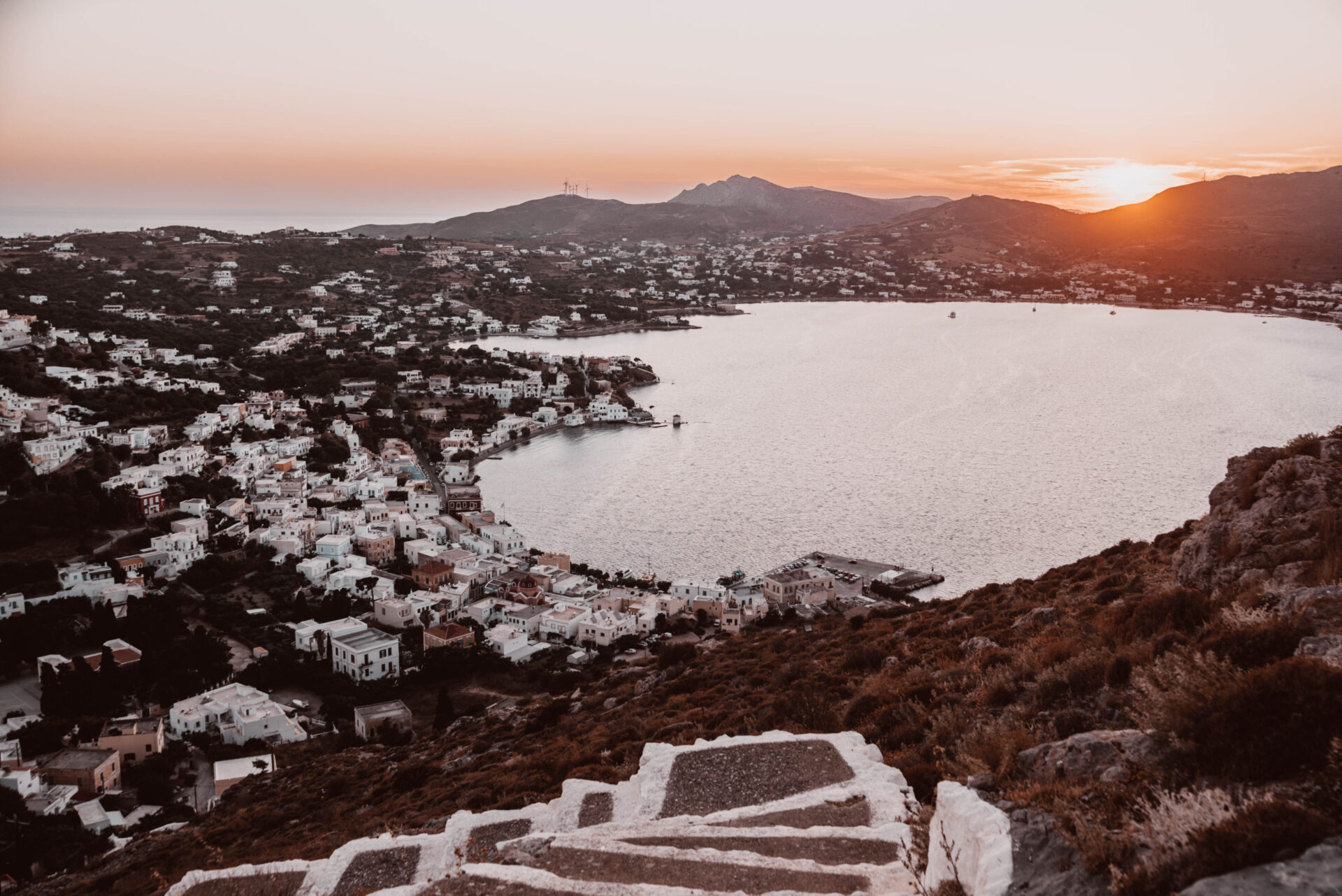
-Visit Merikia tunnel, around Lakki, which was the maritime administration of Italians, who remained in Leros for 31 years (1912- 1943). During the Second World War, the Germans tried to recapture Leros due to its strategic and geographical location by bombarding it for 52 days until they finally conquered it.
-Watch the retro vehicle show, held every summer, or drive a vintage car or motorcycle around Leros.
Can’t leave until
You catch a boat to the tiny, uninhabited island of Αrchangelos, where there is only one taverna with amazing home-cooked Greek food and a sandy beach. A pure idyllic location. You need to arrive on your own boat or call the restaurant to ask them to pick you up with their boat.
Did you know?
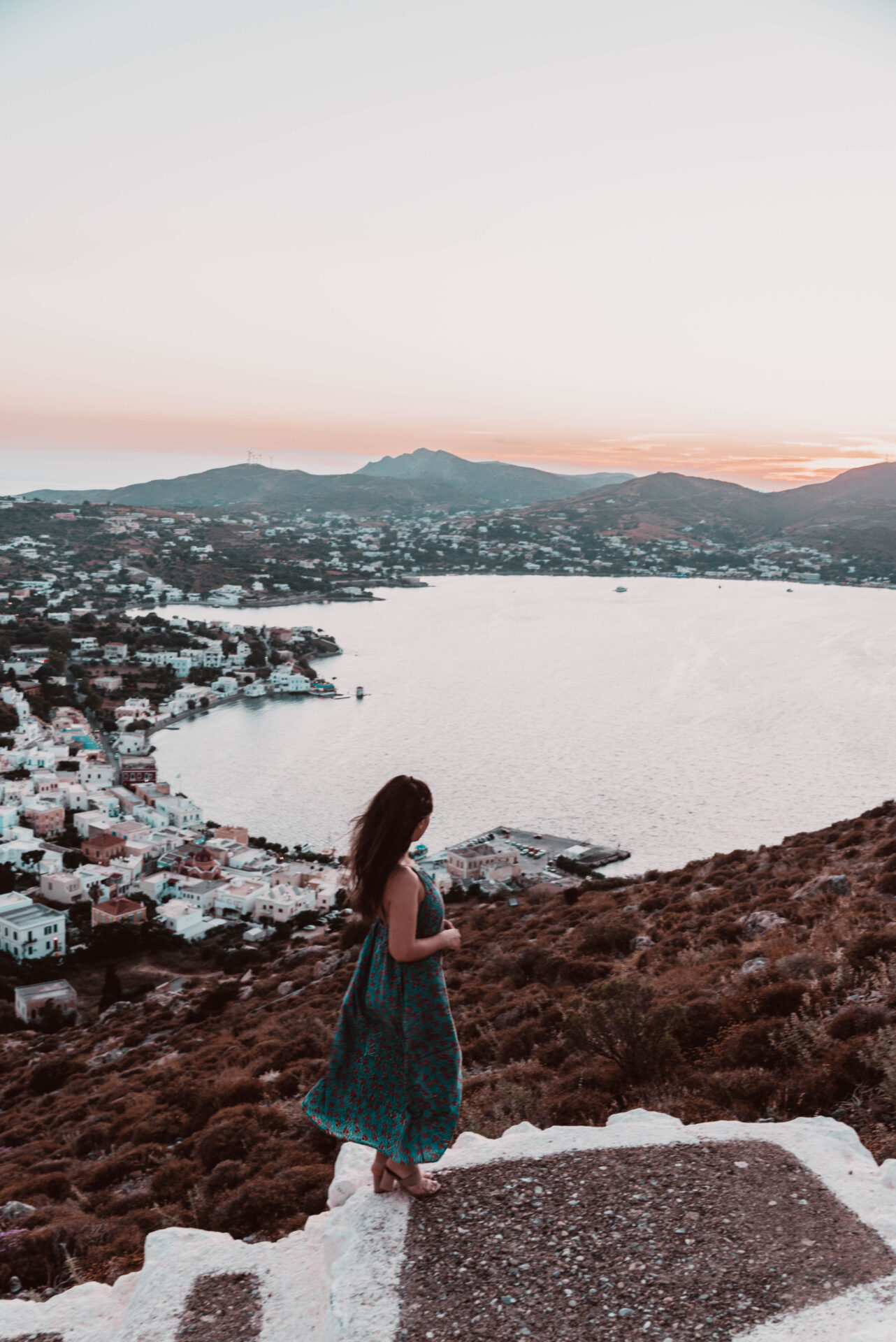
-The story of the famous novel “Guns of Navarone” is based on the Battle of Leros, and Leros island’s coastal artillery guns that were built and used by the Italians and subsequently the Germans.
-Many local songs of Leros are among the most famous nisiotika (island) songs of Greece (“Pote Tha’nixoume Pania”, “Pos to Trivun to Piperi”, “Mes tou Aegeou ta Nisia”).
-The poet Giannis Ritsos was exiled to Partheni. It was here that he was inspired to create the oeuvre “18 lianotragouda tis pikris patridas” that was set to music by Mikis Theodorakis along with the magnificent “Ti Romiosini min tin klais”.
-Lerikos is the name of a local dance. In addition, the dance Issos is performed in Leros island.
*Special thanks to Mr Manolis Mathioudakis, Chairman of the Hoteliers of Leros for his valuable help in making this trip happen.
Images by Polina Paraskevopoulou © (Copyright)
